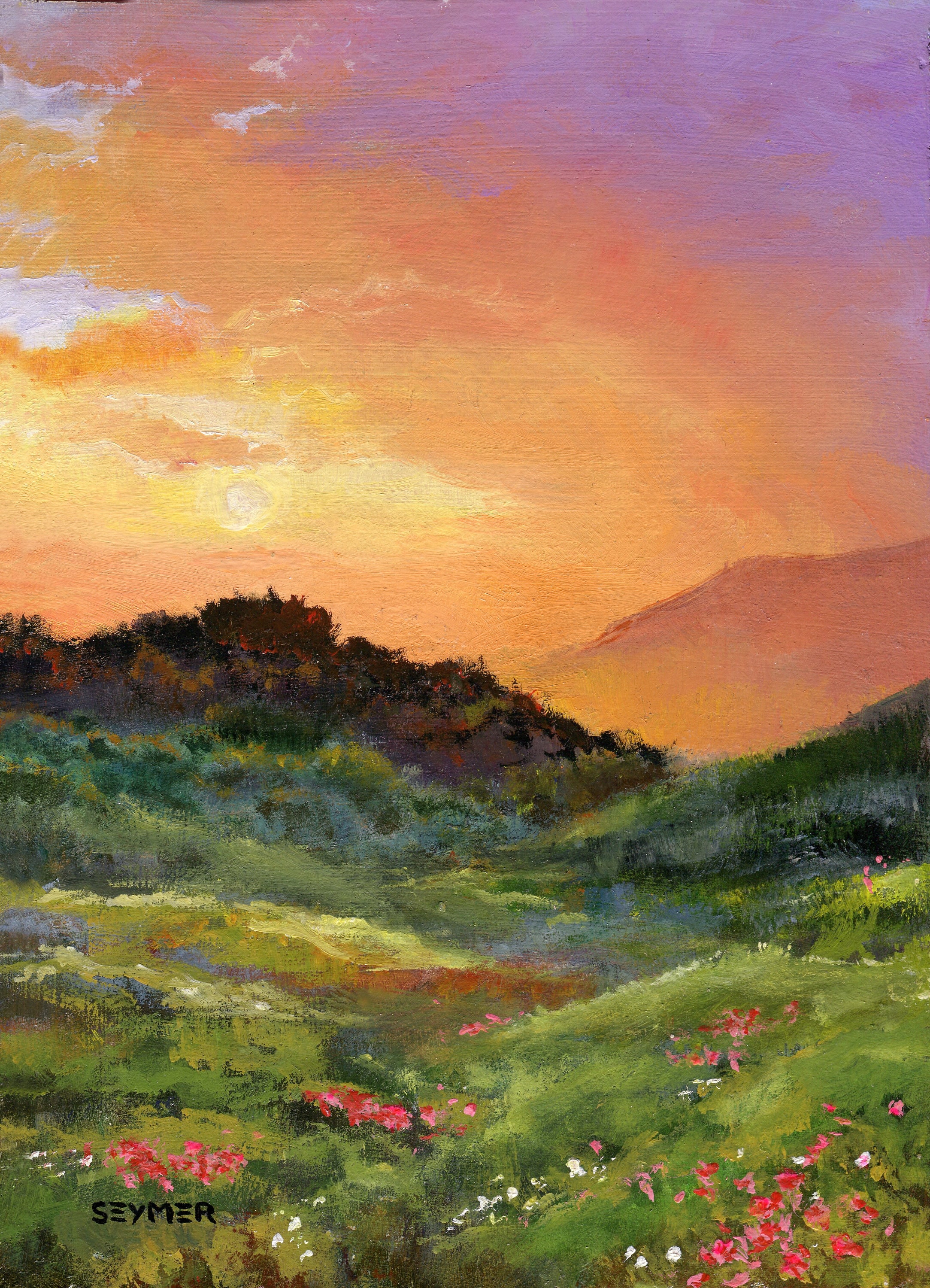Browse Selected Assortments of Oil Paintings for Sale
Browse Selected Assortments of Oil Paintings for Sale
Blog Article
Exploring All Concerning Oil Paints: An Overview to Recognizing Their Beauty and Worth
Oil paintings have actually astounded target markets for centuries, supplying a peek into the artistic proficiency of numerous ages. Their rich history is linked with cutting-edge techniques and profound psychological expression. Comprehending the products and approaches behind these artworks can boost recognition. Furthermore, the market for oil paints presents opportunities for investors and collectors alike. As one explores this remarkable globe, the concern arises: what makes an oil paint genuinely important?
The Background of Oil Painting: A Trip With Time
Oil painting has roots that date back to ancient times, it really flourished during the Renaissance, when artists discovered its flexibility and rich color potential. Early examples can be traced to the 7th century, with strategies developing especially throughout societies. The medium came to be popular in Northern Europe in the 15th century, specifically with the jobs of artists like Jan van Eyck, who spearheaded its use for comprehensive realistic look and dynamic tones. This period noted a separation from tempera paints, permitting better depth and appearance. As oil painting spread, it influenced plenty of artists, bring about masterpieces by popular numbers such as Leonardo da Vinci and Rembrandt. The tool's tradition continues, shaping the art world well right into modern-day times.
Understanding Oil Paints: Products and Techniques
As musicians explore the world of oil paints, they come across a varied array of materials and methods that specify this tool. The key components of oil paint include pigments, which provide shade, and drying out oils, such as linseed, that bind the pigments and assist in application. Various additives can customize the paint's appearance and drying out time, enhancing adaptability. Techniques like glazing, where clear layers are accumulated, and impasto, which entails using thick paint, permit different visual impacts. Furthermore, making use of brushes, combination blades, and also fingers can produce one-of-a-kind appearances and coatings. Comprehending these strategies and products allows artists to totally share their creative thinking and attain the wanted influence in their art work.
The Duty of Shade in Oil Paintings
Color plays a critical role in oil paints, affecting both visual allure and psychological resonance. Recognizing color theory essentials, including the partnerships between hues, can boost an artist's capacity to communicate mood and ambience. Furthermore, understanding shade blending methods enables better depth and splendor in a paint's palette.

Shade Concept Fundamentals
Comprehending color concept is crucial for artists collaborating with oil paints, as it creates the structure for creating harmonious and aesthetically interesting structures. Color concept encompasses the research of exactly how colors connect, the color wheel, and the partnerships between primary, second, and tertiary colors. Artists make use of corresponding colors to enhance contrasts and develop prime focus, while comparable colors advertise unity and cohesiveness within a piece. Additionally, the principles of cool and warm shades affect the assumption of depth and room in a painting. Grasping these principles permits artists to adjust shade effectively, guiding the audience's eye and communicating their desired message. Proficiency of color theory inevitably improves an artist's capacity to share emotions and concepts via their work.
Emotional Effect of Color
The emotional effect of color in oil paintings plays a vital duty in just how audiences view and attach with art work. Colors evoke certain feelings and state of minds, affecting the audience's emotion. Warm shades like reds and oranges can produce a feeling of heat and power, while trendy tones such as blues and greens typically stimulate calmness or self-questioning. Artists purposefully pick shade palettes to enhance narrative elements, directing the audience's psychological trip. The saturation and comparison of shades additionally intensify these effects, attracting focus and creating emphasis. Ultimately, the interaction of shades in oil paintings not just enhances their visual appeal but also works as an effective medium for emotional expression, enriching the viewer's experience and interpretation.
Shade Mixing Techniques
While numerous aspects of oil paint add to the total composition, mastering shade mixing strategies is necessary for accomplishing preferred impacts and deepness. Shade blending can be come close to through various techniques, consisting of the subtractive and additive procedures. Additive blending includes incorporating shades of light, while subtractive blending counts on pigments, where colors blend to produce new tones. Musicians typically utilize a minimal scheme to develop harmonious jobs, recognizing the connections between primary, secondary, and tertiary colors. Methods such as glazing and scumbling even more enhance deepness and brightness. By masterfully mixing colors, a musician can stimulate emotions, produce prime focus, and attain a sense of realistic look, inevitably boosting the painting's emotional and aesthetic influence.
Famous Oil Painters and Their Iconic Functions

Well known for their proficiency of color and method, oil painters have actually created a few of the most popular art work in background. Renowned artists like Vincent van Gogh captivated audiences with his emotive brushwork in "Starry Evening," while Claude Monet's "Perception, Sunup" prepared for Impressionism. Leonardo da Vinci's "Mona Lisa" continues to be a long-lasting sign of imaginative wizard, showcasing his ability in catching human expression. Rembrandt's "The Evening Watch" highlights his ingenious use of light and shadow. Other remarkable numbers consist of Pablo Picasso, who reinvented modern art with his strong trial and error in jobs like "Les Demoiselles d'Avignon," and Georgia O'Keeffe, whose dynamic depictions of landscapes and flowers aided specify American innovation. Each artist's unique design added substantially to the oil paint landscape.
Exactly how to Assess the Top Quality of an Oil Paint
Examining the high quality of an oil painting entails a cautious evaluation of craftsmanship methods, in addition to an analysis of color and composition. Observing brushwork, layering, and the application of paint can reveal the musician's skill level. Additionally, the interaction of shades and the total plan of aspects contribute considerably to the painting's visual worth.
Evaluating Craftsmanship Techniques
A meticulous assessment of workmanship strategies is crucial for determining the top quality of an oil paint. Evaluators should initially examine the application of paint; thick, distinctive brushstrokes might suggest a proficient hand, while excessively uniform applications can suggest a lack of deepness. oil paintings for sale. The layering method is likewise vital; the visibility of lusters and differed thickness can enhance luminance and complexity. Additionally, the top quality of the materials used, such as the canvas and pigments, plays a substantial function in sturdiness and overall visual. Focus to information in components like edges and shifts in between shades reflects the musician's dedication to their craft. Eventually, these strategies add to the painting's psychological influence and market value, working as indications of the artist's skill and intent
Examining Shade and Structure
While reviewing the quality of an oil painting, one need to concentrate on the interplay of color and structure, as these aspects are basic to the art work's total effect. Shade choices can establish and evoke emotions mood; consequently, the musician's palette should be taken a look at for consistency and comparison. A healthy make-up directs the audience's eye and develops a sense of unity. Artists commonly employ methods like the regulation of thirds or leading lines to enhance visual passion. Furthermore, making use of light and darkness can add depth, enhancing the three-dimensionality of the painting. Inevitably, an effective oil painting marries color and structure, involving the visitor and inviting a much deeper admiration of the artist's vision and method.
Taking care of and Preserving Oil Paintings
Proper care and preservation of oil paints is important for preserving their stability and long life. To secure these artworks, it is important to display them far from straight sunlight, which can cause fading and staining. Preserving a stable environment with regulated temperature level and moisture more help in stopping damages. Cleaning up should be done delicately utilizing a soft, dry fabric, avoiding any kind of rough chemicals that can damage the paint or varnish. Routine inspections for indicators of degeneration, such as flaking or cracking, are recommended. When storing or transferring oil paintings, correct extra padding and framework are needed to prevent physical harm. Ultimately, attentive treatment contributes to the visual allure and worth of oil paintings over time.
The Marketplace for Oil Paintings: Investing and collecting
Recognizing the marketplace dynamics for oil paintings is necessary for enthusiasts and investors alike. The value of these artworks is affected by numerous variables, consisting of the artist's track record, historic relevance, and existing trends. Enthusiasts frequently look for items that reverberate personally while thinking about possible appreciation in value. Auctions and galleries act as primary locations for trading, with prices rising and fall based on demand and rarity. Buying oil paintings calls for research right into the marketplace, in addition to an understanding of credibility and provenance. In addition, emerging artists may provide opportunities for considerable returns, while developed names can regulate high rates. Overall, a tactical technique to accumulating can generate both visual satisfaction and economic incentives.

Frequently Asked Concerns
What Are the Ecological Influences of Oil Painting Materials?
The environmental effects of oil paint products include the launch of volatile natural compounds (VOCs), hazardous waste generation, and resource extraction for pigments. These factors add to pollution and eco-friendly deterioration, elevating worries amongst ecologically aware artists and customers.
How Do Various Canvases Influence Oil Paint Outcomes?
Various canvases affect oil paint results considerably. Texture, absorbency, and surface quality can modify paint application, drying out times, and shade vibrancy. Musicians commonly select certain canvases to achieve preferred effects and enhance their artistic expression.
Can Oil Paintings Be Recovered if Harmed?
Oil paints can undoubtedly be brought back if damaged. Professional conservators utilize different methods to fix tears, clean surfaces, and address staining, ensuring that the artwork keeps its original appeal and worth for future generations.
What Are the Indicators of an Original Oil Painting?
The signs of an original oil painting include visible brush strokes, appearance variants, and an irregular canvas weave (oil paintings for sale). Additionally, authenticity may be confirmed through provenance, signatures, and the presence of a varnish layer distinct to oil mediums
Exactly How Has Innovation Influenced Modern Oil Paint Techniques?
Innovation has actually considerably influenced contemporary oil painting strategies by presenting digital tools for planning, enhanced materials for structure and long life, and on the internet systems for sharing and offering art, therefore expanding artists' imaginative opportunities and target market get to. Oil painting has origins that date back to ancient times, it genuinely flourished during the Renaissance, when musicians discovered its convenience and rich shade capacity. The psychological influence of color in oil paints plays an important duty in how customers perceive and link with artwork. While lots of get more info facets of oil painting contribute to the total make-up, mastering shade mixing methods is crucial for achieving wanted impacts and depth. Reviewing the quality of an oil painting includes a mindful assessment of craftsmanship methods, as well as an evaluation of shade and make-up. While evaluating the high quality of an oil painting, one need to concentrate on the interaction of shade and make-up, as these aspects are essential to the art work's general impact.
Report this page